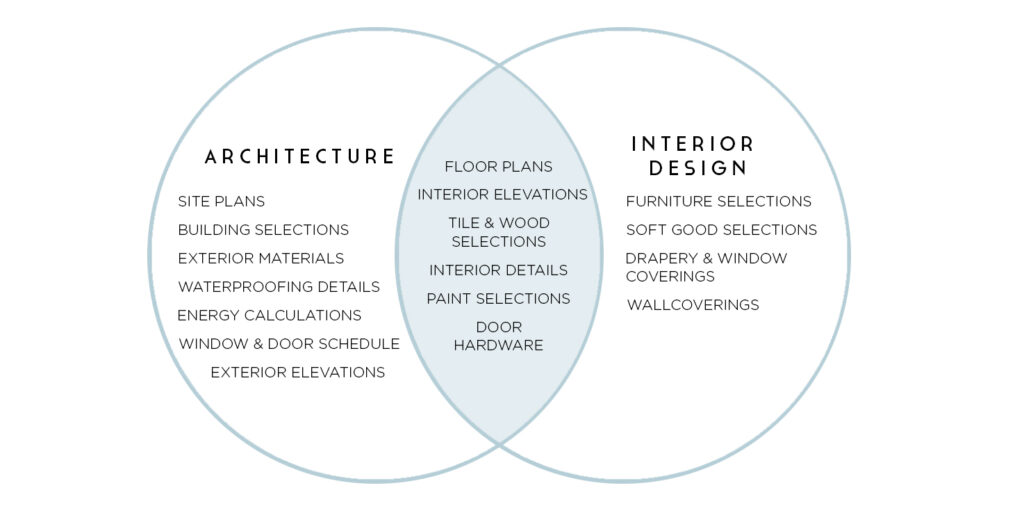Architecture and interior design are two closely related disciplines that are concerned with the design and construction of buildings and the spaces within them.
Architecture is the art and science of designing and planning buildings. It involves considering the function, form, and aesthetic qualities of a building, as well as its environmental impact, structural integrity, and safety. Architects use a combination of creative and technical skills to design buildings that are functional, beautiful, and sustainable.
Interior design, on the other hand, is concerned with the design of the interior spaces of buildings, including homes, offices, and public spaces. Interior designers work with clients to create functional and aesthetically pleasing spaces that meet their needs and preferences. This involves selecting and arranging furniture, colors, lighting, and other design elements to create a cohesive and comfortable environment.
While architecture and interior design are distinct disciplines, they are closely related and often overlap in practice. Architects may work closely with interior designers to ensure that the interior spaces of a building are designed in a way that complements the overall design and function of the building. Similarly, interior designers may work closely with architects to ensure that the interior spaces are designed to meet the needs and preferences of the building’s occupants.
Architecture and interior design trends in India
India is a diverse and rapidly developing country, and the architecture and interior design trends reflect this. Here are some of the current trends in architecture and interior design in India:
Sustainability: With a growing awareness of environmental issues, sustainability is becoming an increasingly important consideration in architecture and interior design. This trend involves using eco-friendly materials and design practices that minimize environmental impact.
Fusion of traditional and modern design: Indian interior design has always been known for its vibrant colors and intricate patterns. However, there is currently a trend towards a fusion of traditional and modern design elements, with traditional design being given a contemporary twist.
Minimalism: Minimalism is also gaining popularity in India, especially in urban areas where space is at a premium. This trend involves using a neutral color palette, simple furniture designs, and clean lines to create a clutter-free and calming environment.
Smart Homes: With the rise of technology, there is also a trend towards creating smart homes that are equipped with the latest technology for comfort and convenience. This includes automated lighting and temperature control, voice-activated assistants, and integrated entertainment systems.
Modular Design: Modular design is becoming popular in India due to its flexibility and ease of customization. This trend involves using pre-fabricated components that can be assembled on-site to create a variety of different designs.
Mixed-use spaces: Mixed-use spaces that combine residential and commercial functions are becoming more popular, especially in urban areas. This trend involves creating spaces that can be used for both living and working, such as co-working spaces and serviced apartments.
Overall, the architecture and interior design trends in India reflect the country’s diverse and rapidly changing landscape. From a focus on sustainability and traditional design to the rise of technology and modular design, these trends are shaping the future of architecture and interior design in India.

